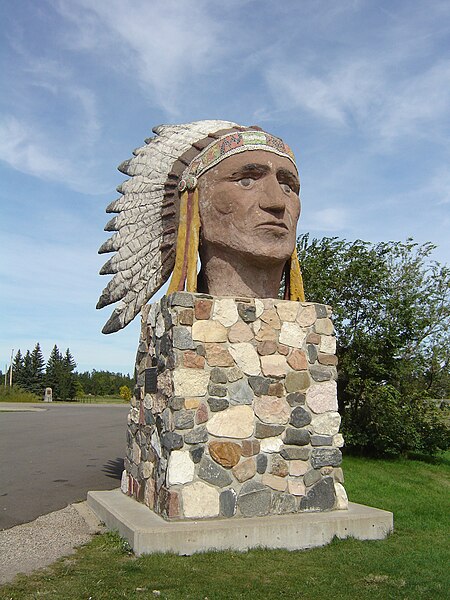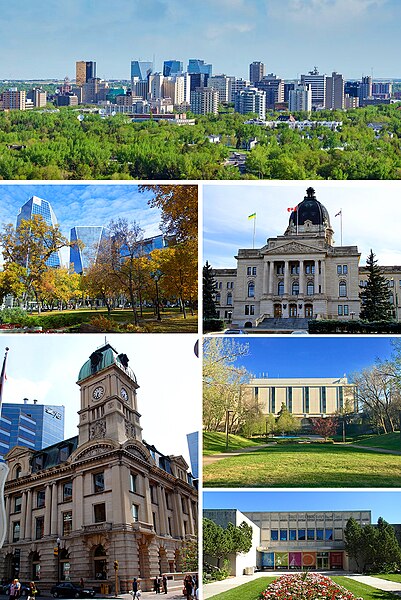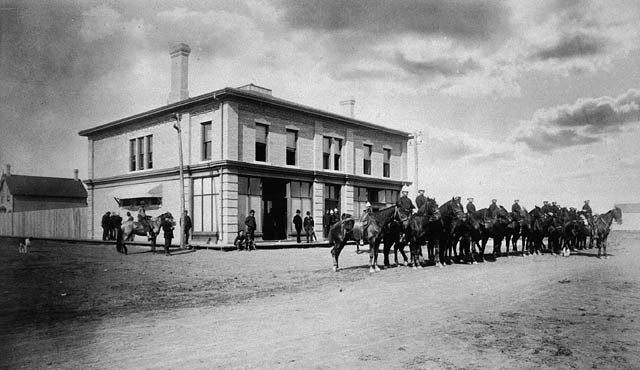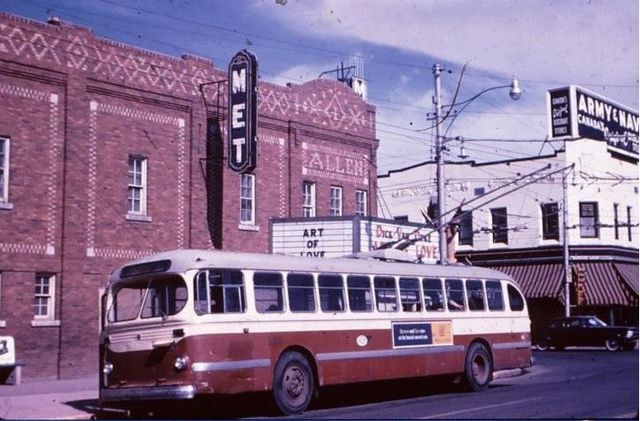Indian Head, Saskatchewan
Indian Head is a town in southeast Saskatchewan, Canada, 69 kilometres (43 mi) east of Regina on the Trans-Canada Highway. It "had its beginnings in 1882 as the first settlers, mainly of Scottish origin, pushed into the area in advance of the railroad, most traveling by ox-cart from Brandon." "Indian" refers to Indigenous peoples in Canada. The town is known for its federally operated experimental farm and tree nursery, which has produced and distributed seedlings for shelter belts since 1901. For many years the program was run by the Prairie Farm Rehabilitation Administration (PFRA).
Indian Head Statue
Shelter Belt Centre Saskatchewan Hwy 56 junction on Highway 1, the Trans Canada
Indian Head streetscape with Film Rescue International (centre left) and Royal Bank (right)
Indian Head grain elevator on a winter day
Regina is the capital city of the Canadian province of Saskatchewan. The city is the second-largest in the province, after Saskatoon, and is a commercial centre for southern Saskatchewan. As of the 2021 census, Regina had a city population of 226,404, and a Metropolitan Area population of 249,217. It is governed by Regina City Council. The city is surrounded by the Rural Municipality of Sherwood No. 159.
From top, left to right: Downtown Regina skyline, Victoria Park, Saskatchewan Legislative Building, Prince Edward Building, Dr. John Archer Library the Royal Saskatchewan Museum.
The Regina Court House during Louis Riel's trial in 1885. He was brought to Regina following the North-West Rebellion.
In June 1912, a tornado locally referred to as the Regina Cyclone devastated the city. The tornado remains the deadliest recorded tornado in Canadian history.
A trolleybus on Broad Street in 1965. The movie theatre and department store were later demolished. Regina saw a number of buildings demolished from 1945 to the 1970s.








